Spectaculars, flops, dream cars: The legendary IAA stars of the past 60 years

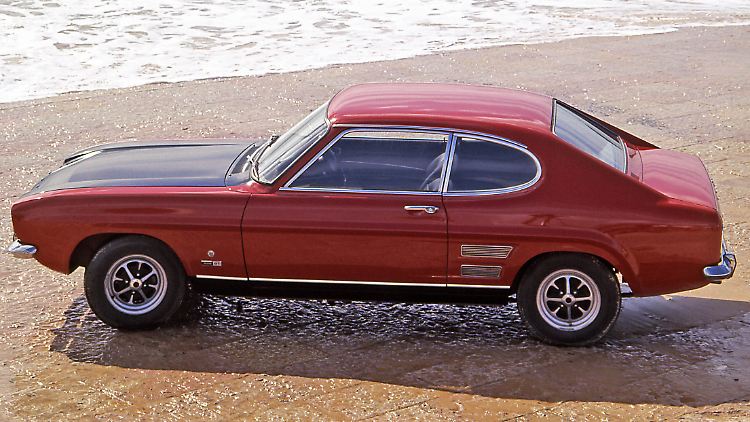
Mini muscle car modeled on the American Ford Mustang: The Ford Capri, built in Cologne, particularly delighted young fathers from 1969 onwards.
(Photo: Ford)
It's actually just a device designed to enable mobility, yet the car is shaping society, the economy, and the zeitgeist like few other inventions. Those who want to know where things are headed traditionally look to the IAA: This is where the car of the future is celebrated. A look back at the highlights and flops of 60 years.
At the height of the German economic miracle, it was Americans who whetted the appetite for a brave new automotive world at the Frankfurt Motor Show in 1965. Opel, then a subsidiary of the US corporation General Motors, delivered the coup de grâce. The Rüsselsheim-based company surprised visitors with the GT Experimental as a dream car, and nearly a million IAA visitors celebrated this mini-Corvette with a Coke bottle design.
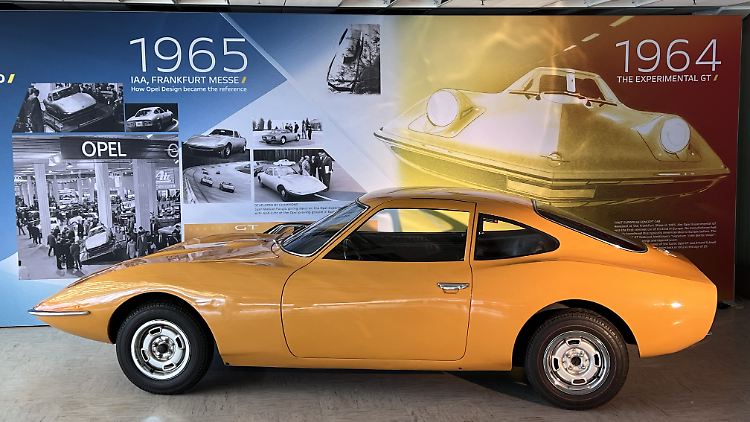
The Opel GT Experimental debuted at the IAA in 1965.
(Photo: Autodrom)
It took three years for the dream car to become an affordable reality: Based on the small Kadett, the Opel GT went into mass production – and initiated a stampede of European pony cars. Ultimately, the "Only flying is better" Opel (advertising slogan) suffered from a birth defect from the perspective of young fathers: It lacked rear seats.
Ford knew what to do. The Cologne-based company transformed the idea and appearance of the American Mustang into a mini muscle car – and the four-seater Capri was born. At the 1969 Frankfurt Motor Show (IAA), the Capri was presented in a wide variety of models, and suddenly Ford achieved a 15 percent market share.

Renault 16: The five-door hatchback with variable interior redefined the mid-size car in 1965.
(Photo: Renault)
"I can't imagine that there is a person who doesn't constantly have new needs," said German Chancellor Ludwig Erhard when he opened the IAA in 1965. And the auto industry knew how to awaken needs—or not: With the R16, Renault invented the variable, five-door hatchback sedan, a visionary concept that is still being adapted by many manufacturers today.
Honda - first Japanese car in GermanyIn 1965, Honda was the first Japanese company to venture into Germany, stunning the audience with the tiny S600. A racy sports car in a kei-car format too small for tall Europeans.
In fact, it took a good ten years before experts warned of a "yellow peril," but then the Japanese were good for sensations: In August 1977, two Mazda 323s completed the 15,000-kilometer endurance test from Hiroshima to Frankfurt without any problems, arriving just in time for their European premiere at the 1977 IAA. From the crowd favorite at the auto show to the import champion in the sales charts, it was only a small step.
A few years later, the Mazda 323 (BD) was even among the most desirable models in East Germany, with Japan supplying a larger contingent. In contrast, the GDR's high-volume models, the Trabant 601 and the Wartburg 353, remained niche players in West Germany—at least they were among the most affordable new cars at the IAA.
The drive unit "that belongs to the future"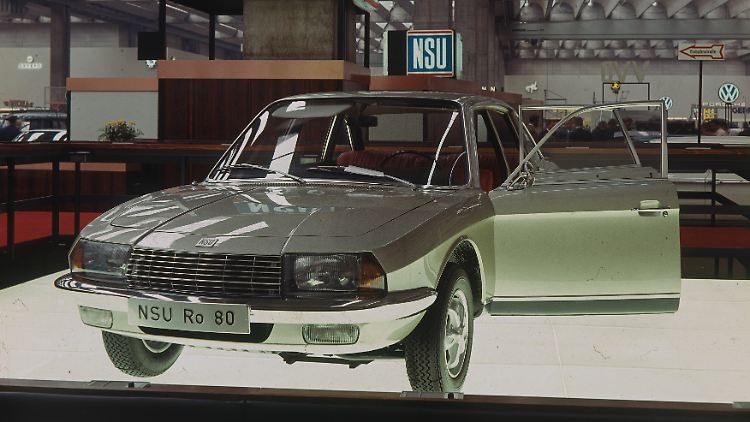
Groundbreaking design and revolutionary Wankel engine: The NSU Ro 80 debuted at the IAA in 1967, but failed on the market.
(Photo: Audi)
Mazda had actually wanted to debut its spacey Cosmo sports car, equipped with a Wankel engine under NSU's license, at the IAA in 1965, but NSU prevented this. The Neckarsulm-based company, which merged with Audi in 1969, had brought the power unit, "to which the future belongs," as the media unanimously declared, into series production in the stylish NSU Wankel Spider and were preparing the futuristic Ro 80 Wankel sedan for 1967. A car that made the tailfin Mercedes parked right next door look antiquated.
In 1969, Mercedes presented the Wankel sports car C111, but it did not go into series production.
"Your son will pursue a career that won't exist until tomorrow. But why are you making compromises with your car?" the advertisement asked. Nevertheless, in the end, only a good 37,000 avant-gardists bought the immature Ro 80, which, despite its claim of "Vorsprung durch Technik," mutated into a commercial mega-flop. Mercedes therefore wisely drove its Wankel superstar C111-I from the 1969 Frankfurt Motor Show straight into the evidence room – only Mazda continues to give the Wankel a chance to this day.
Colorful "safety colors", oil crises and turbo-powered sports cars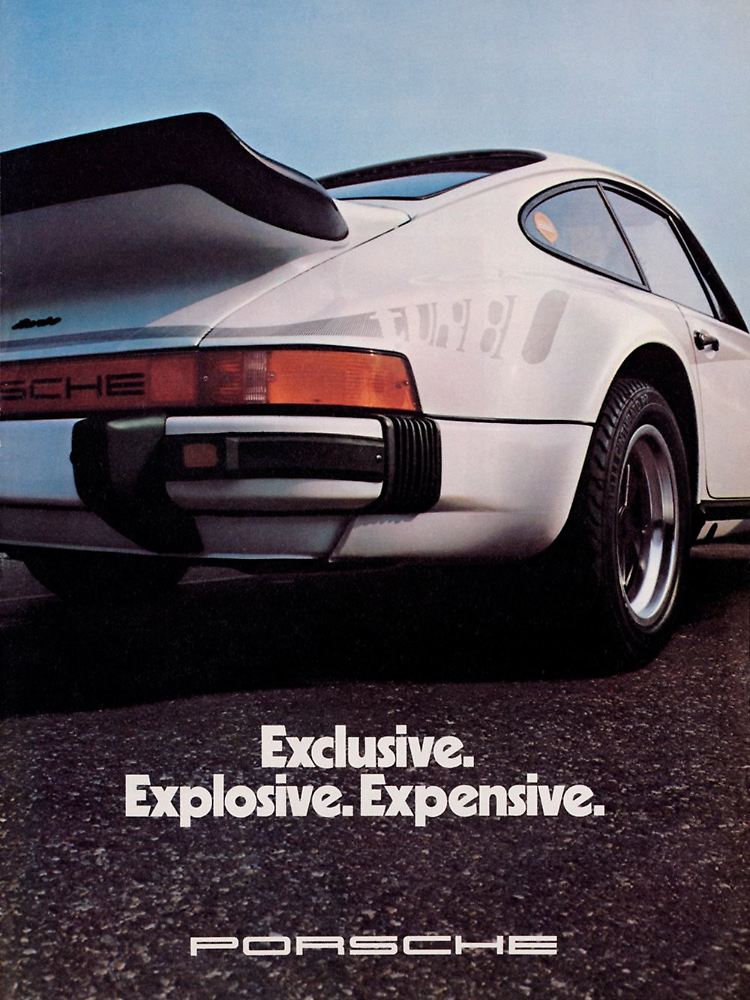
First production sports car with turbocharging: The Porsche 911 Turbo went into series production in 1975.
(Photo: Porsche AG)
Cars with iconic status also emerged at the IAA shows of the 1970s, a decade of brightly colored "safety colors," multiple oil crises, and turbocharged sports cars. The 160-mph Porsche 911 Turbo, the first supercharged production sports car, demonstrated in 1975 that the highest possible top speed had lost none of its allure even after the oil crisis.
Even the heavyweight Volvo 240 was infected with the turbo virus in 1979: "Family-friendly Volvo rocket" was the response of the motor press to the Swedish car, which was also celebrated for its safety technology. The US National Highway Traffic Safety Administration (NHTSA) even selected the Volvo 240 as a benchmark for safety research. An early step toward Vision Zero: At that time, there were six times as many traffic fatalities in Germany as there are today!
"Car satisfies desire for self-expression""Far beyond its transportation capabilities, the car satisfies a basic human need, the desire for self-expression," star designer Giorgetto Giugiaro once declared. Whether he was referring to the Mercedes 450 SEL 6.9, unveiled in 1975, is unclear. This powerful 6.9-liter V8 crowned the W116 series, which was officially called the S-Class for the first time. Perhaps Giugiaro was also thinking of the VW Golf, which he himself had redesigned into an ingeniously simple form. At the 1975 Frankfurt Motor Show, the Golf triggered the next big bang: as the GTI. Three letters that have since stood for sporty fascination in the compact class.
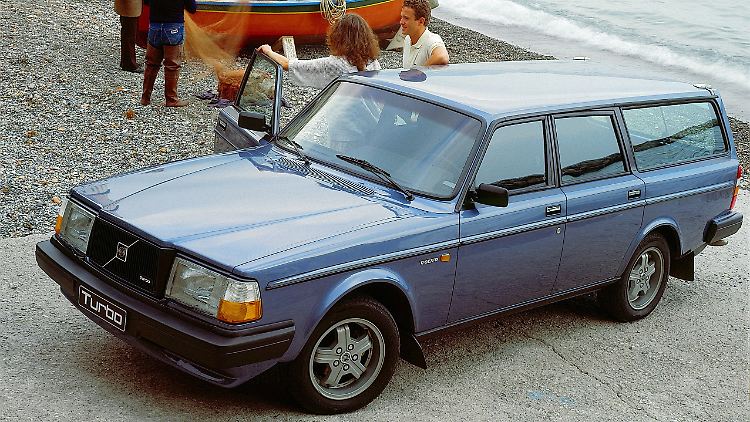
Turbo-fast and exemplary safe family car: The Volvo 240 Turbo achieved cult status.
(Photo: Volvo)
In the 1980s and 1990s, the catalytic converter made exhaust gases somewhat cleaner, but families and recreational sports cars placed the first vans, from the Chrysler Voyager to the Mitsubishi Space Wagon and Renault Espace to the Ford Galaxy and Volkswagen Sharan, way ahead in the registration statistics.
Status-conscious yuppies also set the fashion, preferring high-performance sedans, all-wheel drive vehicles, and convertibles. The IAA once again provided the showcase for this, featuring the notorious highway racers Mercedes 190 E 2.3-16, BMW M3, and Volvo 850 T5-R, as well as the Porsche 959, the first supercar to reach speeds significantly over 300 km/h. But the desirable—and expensive—top carriers from Chrysler (TC by Maserati), BMW (325i, E30), and Saab (900 Cabriolet), as well as the retractable-roof pioneers Mercedes SLK and Peugeot 206 CC, also served as showstoppers.
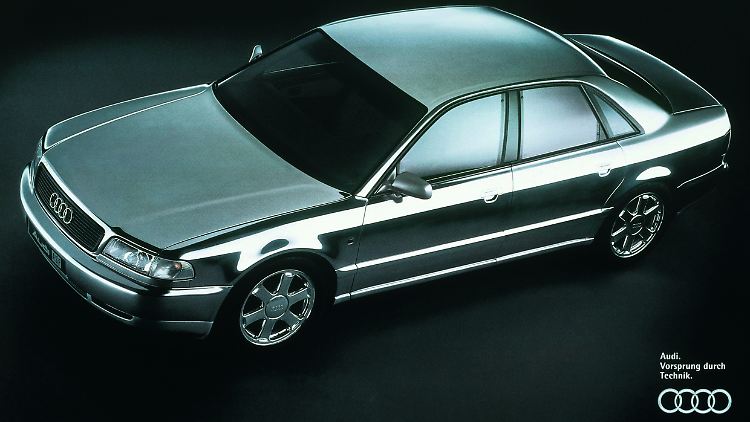
Sensation at the IAA 1993: The Audi ASF with aluminum body pointed the way to the first Audi A8.
(Photo: Audi)
Not to forget Audi's Quattro models - including the A8 as the new Chancellor's luxury class - and SUV pioneers such as the Japanese models Subaru Forester, Toyota RAV4 or the Kia Sportage as an early Korean.
IAA as a test field for Far Eastern productsIn fact, the IAA established itself as a testing ground for Far Eastern products: failure included, as the Chinese Jiangling Landwind experienced in 2005, which completely failed the ADAC crash test. Today, however, it is precisely the brands from the Middle Kingdom that are shining at the IAA with futuristic concepts.
But it was the Japanese who drove e-mobility forward in the early 21st century, before Tesla briefly took the lead: the hybrid pioneer Toyota Prius was followed in 2009 by Mitsubishi with the all-electric i-MiEV and the badge-engineered siblings from Peugeot and Citroen, before the Nissan Leaf was the first to electrify the mass models in 2011.
Those were just the pragmatic beginnings of locally emission-free mobility; hypercars like the Mercedes-AMG F1 or the Chinese MG Cyberster, which brings the roadster concept to electric volume production, have recently mutated into pulse-accelerating crowd-pullers at the auto show. The IAA is changing, but the fun and dreams remain.
IAA highlights since 1965
1965 : Alfa Romeo 2600 SZ, Audi (72), BMW 2000 CS, Ferrari 330 GT, Ford GT40, Glas 2600 V8, Honda S600, Mercedes-Benz 250 S-300 SE (W108/109), Opel Experimental GT, Opel Kadett B, Opel Rekord B, Opel Diplomat V8 Coupé, Porsche 911 Targa, Porsche 912, Renault 16.
1967 : BMW 1600 GT, BMW/Glas 3000 GT, Citroen Dyane, Daf 44, Fiat 125, Ford 17 M/20 M (P6), Iso-Rivolta Grifo GL 350, Maserati Ghibli, NSU Ro 80, NSU 1200 C, Opel Olympia, Opel Commodore, Porsche 911 T, Simca 1100.
1969 : Audi 100 Coupé, Fiat 128, Fiat 130, Ford Capri GT/R, Mercedes-Benz C 111-I, Mercedes-Benz 300 SEL 3.5 (W109), Mercedes-Benz 280 SE 3.5 Coupé and Cabriolet (W111), Opel GT Aero, Opel Diplomat CD as forerunner of the Bitter CD, VW-Porsche 914, Volkswagen 181.
1973 : Audi Ace of Spades, BMW 2002 Turbo, Chrysler-Simca 2 Litre, Citroen GS Birotor, Ford Mustang II, Honda Civic, Jaguar XJ Series 2, Lada 1200/1500, Lancia Beta Coupé, Mazda 818, Mazda RX-3, Mazda RX-4, Mercedes-Benz 450 SE/SEL (W116), MG B GT V8, Opel Kadett (C), Porsche LFA long-term car, Nissan/Datsun 240Z, Polski-Fiat 1300/1500, Saab 99 CombiCoupé, Seat 127 4puertas, Skoda 110 R, Volkswagen Passat Variant.
1975 : BMW 3 Series (E21), Jaguar XJ-S, Opel Ascona B and Manta B, Peugeot 604, Porsche 911 Turbo production version, Princess 1800/2200, Renault 30, Simca 1307/1308, Triumph TR 7, Volkswagen Polo, Volkswagen Golf GTI, Volvo 66, Volvo 240/260 sedan and station wagon.
1977 : Audi 100 Avant, Ford Granada (Gen. 2), Mazda 323, Mercedes-Benz T-Model (123 series), Opel Rekord (E), Opel Commodore (C), Opel Senator (A), Opel Monza (A), Rover 3500 V8 (SD1, German trade fair premiere), Seat 1200 Sport, Toyota Cressida.
1979 : Audi 200, BMW M1, Fiat Ritmo Cabrio, Mercedes-Benz S-Class (W126), Mercedes-Benz G-Class, Opel Kadett D (with front-wheel drive), Porsche 928 S, Suzuki Eljot/LJ80, Talbot 1510, Volvo 345.
1981 : Daihatsu Cuore, Mercedes-Benz SEC (W126), Nissan Patrol 4WD, Nissan Stanza, Opel Ascona C (front-wheel drive), Opel Tech 1 Concept, Porsche 944, Subaru 1800 4WD (Leone), Volkswagen Polo, Volkswagen Auto 2000 Concept.
1983 : Alfa Romeo 33, Audi 200, Audi 80 Quattro, Audi Quattro Sport, Austin Maestro, BMW M635 CSI, BMW 524 TD and 525 eta (E28), BMW 3 Series four-door (E30), Citroen Visa Plein Air, Fiat Uno, Ford Escort Cabrio, Ford Orion, Mercedes-Benz 190 D and 190 E 2.3-16, MG Metro Turbo, Mitsubishi Space Wagon, Nissan Prairie, Nissan Silvia, Peugeot 205 GRD, Renault 11 TXE, Seat Ronda, Talbot Samba Cabrio, Volkswagen Golf II, Volvo 360 GLE.
1985 : BMW 3 Series Convertible (E30), BMW M3 (E30), BMW Z1 Concept, Mazda RX-7, Mercedes-Benz T-Model (W124), Porsche 959, Saab 900 Convertible, Volvo 780.
1987 : Alfa Romeo 164, BMW 750i, BMW 3 Series Touring (E30), Bitter Type 3, Ferrari F40, Fiat Tipo, Peugeot 405, Porsche 911 Speedster Clubsport, Treser T1.
1989 : BMW 850i, Chrysler Saratoga V6, Daihatsu Applause, Lancia Dedra, Land Rover Discovery, Mazda MX-5, Mercedes-Benz SL (R129), Nissan Maxima, Nissan 300 ZX Twin Turbo, Opel Calibra, Peugeot 605, Porsche Panamericana, Renault 21 Hatchback, Rolls-Royce Silver Spirit II.
1991 : Audi S4, Audi 100 Avant (C4), Audi Quattro Spyder Concept, BMW E1, BMW 5 Series Touring, Citroen 106, Porsche 968, Seat Toledo, Toyota Camry, Volvo 850, Volkswagen Golf III.
1993 : Audi ASF (near-production A8 prototype), Kia Sephia, Mercedes-Benz Vision A, Opel Tigra, Volkswagen Golf Variant, Volkswagen Golf III Cabriolet.
1995 : Audi TT Concept, BMW Z3, BMW 5 Series (E39), Fiat Barchetta, Fiat Brava, Fiat Bravo, Ford Galaxy, Kia Clarus, Kia Sephia Cabrio (Karmann), Kia Sportage made by Karmann, Mercedes-Benz E-Class (W210), MGF, Mitsubishi Carisma, Nissan Almera, Opel Vectra II, Peugeot 406, Renault Initale, Renault Mégane, Seat Alhambra, Toyota Prius Concept, Toyota RAV4 FunCruiser 3- and 5-door, Volkswagen Sharan, Volkswagen Golf CityStromer, Volvo S4 or S40 and Volvo 850 T5-R.
1997 : Alfa Romeo 156, Citroen Xsara, Daihatsu Terios, Ford Puma, Mercedes-Benz A-Class, Mercedes-Benz M-Class, MCC Smart, Opel Astra (G), Renault Kangoo, Saab 9-5, Subaru Forester, Volkswagen Golf IV, Volvo V70 Cross Country.
1999 : Audi A2, BMW Z8, Fiat Punto, Mercedes-Benz Vision SLR, Mercedes-Benz CL Coupé, Opel Astra Eco4, Peugeot 206 CC.
2001 : BMW 7 Series, Chrysler PT Cruiser, Citroen C3, Fiat Stilo, Ford Fiesta, Ford Fusion, Hyundai Coupé, Lancia Thesis, Lexus SC, Maserati Spyder, Nissan Crossbow Concept, Renault Avantime, Renault Vel Satis, Seat Tango, Skoda Superb, Volkswagen Polo.
2003 : Aston Martin DB9, Bentley Continental GT, Audi Le Mans Quattro Concept (R8-Harbinger), Audi S4 Cabrio, BMW X3, BMW Z4, Kia Sorento, Lamborghini Gallardo, Mercedes SLR McLaren, Opel Astra (H), Smart Forfour, Volkswagen Golf (V).
2005 : Audi Q7, Dacia Logan, Dodge Caliber, Geely, Brilliance and Landwind as the first Chinese brands, Honda Civic, Lexus RX Hybrid, Mercedes-Benz S-Class, Nissan Tone and Nissan Micra C+C, Peugeot 407 Coupé, SsangYong Kyron, Toyota Yaris (Gen. 2), Volkswagen Eos, Volvo C70 Cabriolet.
2007 : Aston Marton DBS, Audi RS6 Avant, Chevrolet Beat (harbinger of the Spark), Daihatsu Cuore (Gen. 7), Ford Kuga (pre-production version), Hyundai i30 CW, Jaguar 3),Volkswagen Tiguan.
2009 : Aston Martin Rapide, Bentley Continental Flying Spur, BMW iON, Peugeot 5008, Rolls-Royce Ghost, Saab 9-5 (NG).
2011 : BMW i3, Chevrolet Camaro, Fiat Panda, Fiat Fremont, Hyundai i30 (Gen. 2), Infiniti FX Sebastian Vettel, Lancia Flavia Cabrio, Lancia Voyager, Lotus Evora S, Mercedes-Benz B-Class, Nissan Leaf, Peugeot 3008 Hybrid4, Porsche 911, Subaru BRZ, Subaru XV.
2013 : Audi Sport Quattro Concept, Audi A3 Cabriolet, BMW i8, Ford S-Max Concept, Hyundai i10 (Gen. 2), Mercedes-Benz GLA, Mazda3 (Gen. 3), Nissan X-Trail, Opel Monza Concept, Peugeot 308 (Gen. 2), Porsche 918 Spyder, Skoda Rapid Spaceback, Volkswagen e-up, Volvo Concept Coupé (precursor to the Polestar 1).
2015 : Alfa Romeo Giulia, Audi E-Tron Quattro Concept, BMW 7 Series, Citroen Cactus M, Citroen DS4, Ferrari 488 Spider, Ford Mustang, Infiniti Q30, Jaguar F-Pace, Kia Sportage, Kia Optima, Mercedes-Benz S-Class Cabriolet, Mercedes-Benz C-Class Coupé, Mini Clubman, Opel Astra (J), Porsche Mission E (Taycan precursor), Renault Talisman, Suzuki Baleno, Smart Fortwo Cabriolet.
2017 : Audi A8, BMW X7, BMW 6 Series GT, Borgward X5, Borgward Isabella Concept, Dacia Duster (Gen. 2), Ferrari Portofino, Ford Fiesta (final generation), GWM Wey F-Cell, Mercedes-AMG Project One, Opel Grandland X, Porsche Cayenne, Range Rover Velar, Seat Arona, Skoda Karoq, Smart Vision EQ, Volkswagen T-Roc, Volkswagen ID as a concept.
2019 : Honda e, GWM Wey
2021 : ACM City One, Audi Grandsphere Concept, BMW i4, BMW iX, BMW 2 Series Coupé, BMW Concept iVision Circular, Cupra Urban Rebel Concept, Dacia Jogger, Elegend EL1, Ford Mustang Mach-E GT, Genesis Funky Cat, (GWM) Wey Coffee 01, Polestar Precept, Porsche Mission R Concept, Renault Megane E-Tech, Renault 5 Prototyp, Smart Concept #1, Volkswagen ID.5, Volkswagen Concept ID.Life.
2023 : Audi Activesphere Concept, Avatr 12, BMW i5 Touring, BYD Seal U, Denza D9, Ford Explorer, Mercedes-Benz CLE Cabrio and Coupé, MG Cyberster, Mini Cooper, Nio ET5 Touring, Opel Astra Electric, Opel Experimental, Renault Scenic, Renault Rafale, Seres 5, Smart #3, Volkswagen Passat, Volkswagen ID.7, XEV Voyo, Xpeng G9
Source: ntv.de, Wolfram Nickel, sp-x
n-tv.de




